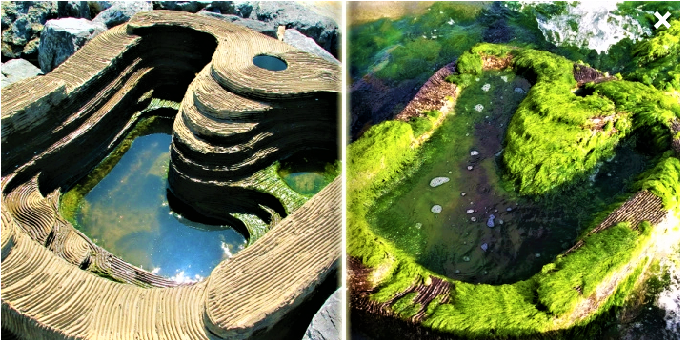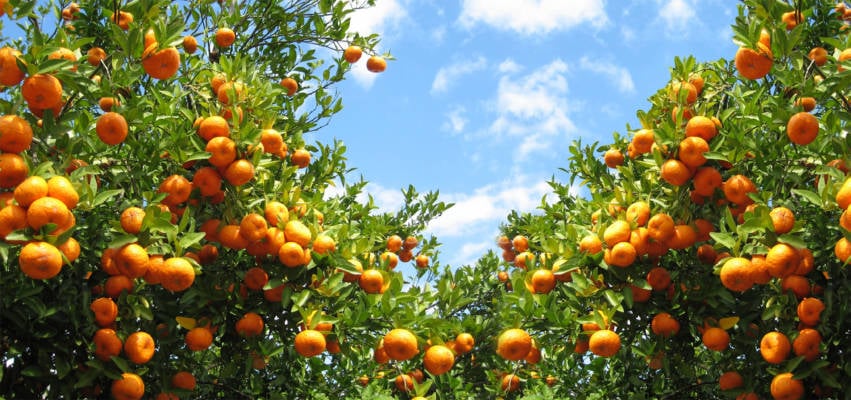ECOncrete tide pools provide a home for marine life in urban coastal waters.
By Sharon Wrobel, The Algeiminer
An Israeli environmental startup has developed a technology to address one of the world’s least sexy problems — bringing concrete to life — by using a special cement structure that invites marine fauna to grow on coastal infrastructure.
“Our admix is like the salt and pepper to a recipe,” ECOncrete CEO Ido Sella told The Algemeiner. “It is a chemical modification of the composition of concrete for a better, more balanced biology and to make it more hospitable to marine life.”
About half of the world’s population lives along a coastline with bridges, ports and seawalls, which are mostly built with concrete threatening to destroy marine life. The technology developed by the Tel Aviv-based ECOncrete, launched in 2012, turns concrete into a new substance with materials that are plant and animal-friendly. The products are designed with tiny holes for small fish to live in and on top of which seaweed can grow, while corals and oysters appear around it once put into water so that aquatic life can thrive.
The concrete is stronger than commercial concrete because of the biology growing, a process called “bio protection.” Instead of building traditional concrete blocks, ECOncrete’s products — which include blocks, tide pools, and mats — are based on a technique known as bio-mimicry, which copies the shapes and textures of natural systems.
“Marine ecologists don’t often create startups, they are found more in academia,” said Sella, who co-founded ECOncrete with marine biologist Dr. Shimrit Perkol-Finkel, who tragically died in an electric scooter accident in March. “We are here for a mission. We want to make a change to the world and marine life by working with industry and a science-proven technology.”
The development of eco-friendly techniques has become more pressing as commercial concrete has become the most consumed material in the world, after water. Most marine infrastructures such as breakwaters, seawalls, and piers are made from the same conventional concrete, which is disrupting and damaging the ecosystems that support thriving oceans. Concrete accounts for about 70% of coastal and marine construction — but its chemical properties are damaging to marine flora and fauna, and are discouraging biodiversity for species such as oysters, tube worms, and corals to find their habitat.
One of the investors in ECOncrete’s technology is the Port of San Diego, which has embarked on a three-year pilot project to install the startup’s so-called interlocking “CoastaLock” tide pool armor on Harbor Island’s shoreline. The coastal area is the first in the world to be secured with 72 interlocking bio-enhancing block units, which are like an extra buffer against rising sea levels and are designed to create ecosystems that mimic natural rock pools. They retain water to increase the habitat diversity as well as encourage colonization by marine species. Currently Harbor Island is protected from storm flooding and erosion by a mound of loose stones known as riprap, which provides limited habitat space.
“We are all facing a global crisis of climate change threats such as rising sea-levels and superstorms and as a port we need to protect our coastal lines so they are more resilient and stable, while we also need to adopt a climate change action plan,” Port of San Diego Commissioner Rafael Castellanos told The Algemeiner. “ECOncrete’s technology is very promising as it has superior environmental benefits, such as creating a ‘bio-skin’ around the pools which is like a crust to improve resilience, leads to less erosion, creates a carbon sink and cuts greenhouse gas emissions.”
The cement mix ECOncrete uses to make their products boasts a 30-46% reduction in greenhouse gas emissions compared to a Portland-based mix. According to Sella, the company’s products cost between 5% to 20% more than traditional concrete, depending on the size of the project.
“It is an expensive pursuit to replace traditional riprap but it is marginal when compared to the massive damages created by superstorms,” Castellanos added.
As part of its blue economy incubator, the Port of San Diego has committed to investing $200,000 in ECOncrete and in exchange will be entitled to 5% in royalties on the product’s future sales in the state of California. In the coming months, ECOncrete and the port’s engineers will engage in on-going monitoring of the project to measure the benefits and present environmental metrics to determine its potential to replace riprap. It is expected that the marine life and flora and fauna to colonize the tide pools will include seaweeds, barnacles, and anemones.
“For us the end result will be to demonstrate that the product works, to scale it up and help bring it to the market,” said Castellanos. “With this project we can help owners of coastlines around the world to address the challenges of achieving lower greenhouse emissions by creating green living shorelines.”
Meanwhile, ECOncrete has been busy over the past few years installing its technology along shorelines across the globe — including in the Netherlands, New Zealand, the UK, Miami, Florida, San Francisco, and Staten Island. One of the startup’s projects was performed at New York’s Brooklyn Bridge Park, which has helped to increase the amount of species and the amount of biodiversity in the water.
“We are now a recommended technology in New York,” said Sella. “We have seen our technology being approved by the regulator in New York, Florida, Italy and other regions. We are seeing a huge shift in governments and companies needing to meet sustainable goals and we are helping to achieve them.”
“We are scaling up much faster than expected. Until one and a half years ago we had projects of 50-60 units of our concrete, now it is more than a few thousand units and we expect to get to 10,000 cubic meters of concrete,” he added.
Separately, ECOncrete has in recent months received new praise, making the shortlist for “Europe’s hottest tech startup awards 2021.” In April, the startup was listed among the 12 winners of the 2021 BloombergNEF pioneers list, a group chosen among 250 early-stage companies from 36 countries with the potential to reduce the impact of greenhouse gas emissions and contribute to decarbonization, innovation, and the likelihood of adoption.
“Climate change has raised the awareness for the need of research and development to find solutions to the problem of devastation caused by coastal development and the use of concrete, which is composed of hazardous material harmful to marine organisms,” Tali Mass, Associate Professor at the Leon H. Charney School of Marine Sciences of Haifa University, told The Algemeiner. “The structure and surface of ECOncrete products is favorable for microorganisms like algae to settle and then the fish will start to come on.”
MAKE THE LAND OF ISRAEL EVEN MORE BEAUTIFUL!
PLANT YOUR VERY OWN FRUIT TREES IN ISRAEL!
Farmers near the Gaza border lost family, friends and workers. Spring is here, and they desperately need help to replant the farms. Join us in blessing the People and Land of Israel.
“I will ordain My blessing for you…” (Leviticus 25:4)



